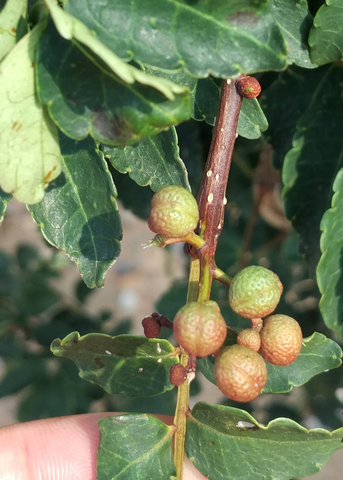1. Belonging to the Rutaceae Family, Similar Yet Different in Appearance
Chinese Sichuan pepper and Japanese Sansho pepper both belong to the Rutaceae family, sharing certain genetic relations. Their leaf structures consist of compound pinnate leaves, but they exhibit differences:
- Chinese Sichuan pepper typically has 5-13 leaflets, whereas Japanese Sansho pepper often has over 15 leaflets. Additionally, the leaflets of Japanese Sansho pepper are smaller in size.
- Chinese Sichuan pepper possesses prickles on its surface, which can cause discomfort when handling, whereas Japanese Sansho pepper lacks these prickles and is sometimes referred to as "thornless Japanese pepper."
- Chinese Sichuan pepper reproduces through non-fusion reproduction, enabling fruiting without the need for male flowers. In contrast, Japanese Sansho pepper exhibits dioecious characteristics, requiring separate male and female trees for pollination and fruiting.
- Chinese Sichuan pepper fruits contain prominent oil cells on their surface, rich in volatile components, whereas Japanese Sansho pepper fruits have less prominent oil cells on their surface, resulting in relatively fewer volatile components.

2. Similar Yet Different Types of Active Ingredients
Both Chinese Sichuan pepper and Japanese Sansho pepper contain aromatic and pungent compounds, but they differ in specific compositions:
- Aromatic compounds in Chinese Sichuan pepper primarily include d-limonene, limonene, linalool, and ethyl cinnamate, while Japanese Sansho pepper has the highest content of limonene, followed by α-phellandrene, with relatively lower levels of linalool. Notably, α-phellandrene is a unique aromatic component of Japanese Sansho pepper, contributing significantly to its distinct flavor.
- Pungent compounds in Chinese Sichuan pepper mainly comprise hydroxy-α-sanshool, hydroxy-β-sanshool, and hydroxy-γ-sanshool, with hydroxy-α-sanshool being the most abundant. Research indicates that the composition of pungent compounds in Japanese Sansho pepper follows a similar pattern. However, due to the less prominent oil cells in Japanese Sansho pepper fruits and smaller size of these oil cells, the overall sensation of pungency is relatively weaker.

3. Major Varieties and Uses of Japanese Sansho Pepper
- Asakura Sansho: Widely used in Japan, characterized by its deep red fruits used primarily in their fresh state. Each fruit weighs 14-15g, with a thickness of 0.9-1.2mm and an essential oil content of 6.0-10.7ml/100g.
- Budō Sansho: A mutation of Asakura Sansho, featuring fewer prickles and denser pores on the skin. Oval-shaped fruits weigh 90-100g per 1000 grains, with a bright red peel and a weight of 17-23g per 1000 grains. Widely employed in spices and traditional medicine, representing dried Sansho pepper varieties.
- Ryuukin Sansho: Characterized by its upright tree shape, strong branching, and high yield capacity. The fruits are large, round, and bright red, with a weight of 16-18g per 1000 grains. Known for its early flowering and fruiting ability, as well as high productivity and stability.
- Hana Sansho: Easily produces flowers with abundant pollen, primarily used as pollination trees for fruiting Sansho pepper cultivation. Its tender shoots are suitable for culinary use as Sansho pepper buds.

Uses of Japanese Sansho Pepper
- Japanese Sansho pepper is one of the earliest spices used in Japan, renowned for its unique aroma and pungency. It complements well with other Japanese condiments like miso paste and soy sauce, enhancing dishes such as miso soup, clear soup, and teriyaki chicken. Additionally, it is a key ingredient in Japanese seven-spice blend (shichimi togarashi).
- Moreover, Japanese Sansho pepper is infused in traditional New Year's sake (spiced clear sake) to ward off illnesses.
In conclusion, while Chinese Sichuan pepper and Japanese Sansho pepper share certain botanical similarities, they possess distinct characteristics in terms of appearance, active ingredient composition, and culinary applications.

